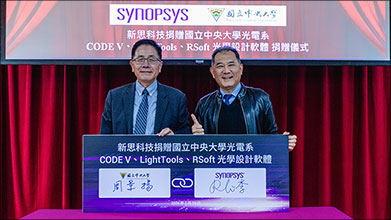Cloud native EDA tools & pre-optimized hardware platforms
According to a report prepared by Research and Markets, the global spend on immersive technologies will reach $1,274.4 billion by 2030, with a CAGR of 42.9%. This is a clear sign that the augmented reality and virtual reality market will play an increasingly large role in our lives.[1]
We often use the terms augmented reality and virtual reality interchangeably. But how are they different?
The key difference is that virtual reality (VR) simulates an entire visual environment, while augmented reality (AR) captures the real environment and maps the simulated environment to the real environment, presenting them together using a visual display.

In AR, the display is often seen-through to combine the simulated environment with the real environment. For AR to work, an optical system must project an image on a transparent display in front of your eyes to overlay the current environment. This may be in the form of a head-mounted display, handheld display (such as a digital tablet), or a mounted display (such as a windshield).
In VR, the display only needs to output the simulated environment. There must be an optical system in a head-mounted display that will project an image on a display in front of your eyes.
Typically, an optical system for augmented or virtual reality includes light sources (display), receivers (eyes), and optical elements (lenses). New types of optical and photonic technologies are needed in next-generation AR/VR systems to provide greater visual comfort for prolonged usage, and to achieve a better sense of display immersion for the user.
AR/VR headsets have been released to the market; however, they can be uncomfortable to wear and expensive to manufacture.[2] “Optics remains the key challenge in developing the ultimate virtual experience,” says Bernard Kress, from Microsoft’s HoloLens Division. A number of optics manufacturers have made big announcements recently, and while those announcements will only be of immediate interest to hardware manufacturers and developers, these are things that will make their way to consumers in the form of other products.[3] For example, AR/VR has the potential to modernize learning environments, especially in this day and age of social distancing. Extended reality (XR) experts believe the education and healthcare industries are leaders in the use of immersive technologies. VR in education is forecast to be a $700 million market by 2025. Fortune Business Insights predicts that the VR in the education market will grow from $656 million in 2018 to $13 billion in 2026.[4]
Other emerging AR/VR applications include head-up displays for driving, 3D design tools for architecture and consumer products, and even for virtual real estate tours. The COVID-19 pandemic has accelerated AR/VR adoption by individuals and businesses.[5] Interactive and immersive technologies, and the optics that support them, are the future.
To learn more about optics for AR and VR and how Synopsys provides design solutions, visit our website:
Other blog articles about AR/VR:
- Trends in Imaging Design: Why AR/VR Needs Disruptive, Smart Imaging Systems
- Trends in Imaging Design: Using Digital Twins to Optimize Imaging Systems
References:
[1] https://arpost.co/2021/08/06/covid-impact-ar-vr-accelerated-adoption/
[2] https://arpost.co/2020/02/18/ar-headsets-new-waveguide-technology/
[3] https://arpost.co/2022/04/11/optics-component-manufacturers-announcements/
[4] https://arpost.co/2022/04/28/vr-in-education-full-immersion-learning/
[5] https://arpost.co/2021/08/06/covid-impact-ar-vr-accelerated-adoption/










